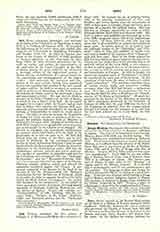

Zarai, titular see of Numidia in Africa, mentioned by the “Itinerarium Antonini”, 35, and by the “Tabula Peutingerii”. Ptolemy (IV. 2) calls it Zaratha, and wrongly places it in Mauretania Caesariensis. It is probably the Zaratha of Apuleius (Apologia, 23). These two forms and the term “Zaraitani” found in an inscription (Corp. Inscript. Lat. 4511) seem to indicate that the name Zarai which appears on another inscription (Corp. Inscript. Lat. 2532) must have lost a final dental letter. The ruins of Zarai, called Henshir Zraia, to the southeast of Setif in Algeria, crown an eminence which commands all the country on the left bank of the Oued Taourlalent, which the Arabs in the Middle Ages called Oued Zaraoua; remains of a Byzantine citadel and of two Christian basilicas are yet visible. Two bishops of Zarai are known: Cresconius, present at the Conference of Carthage, 411, where he had as a rival the Donatist Rogatus; and Adeodatus, exiled by Huneric after the Conference of Carthage, 484, and who died in exile for the Faith.
S. PETRIDES

